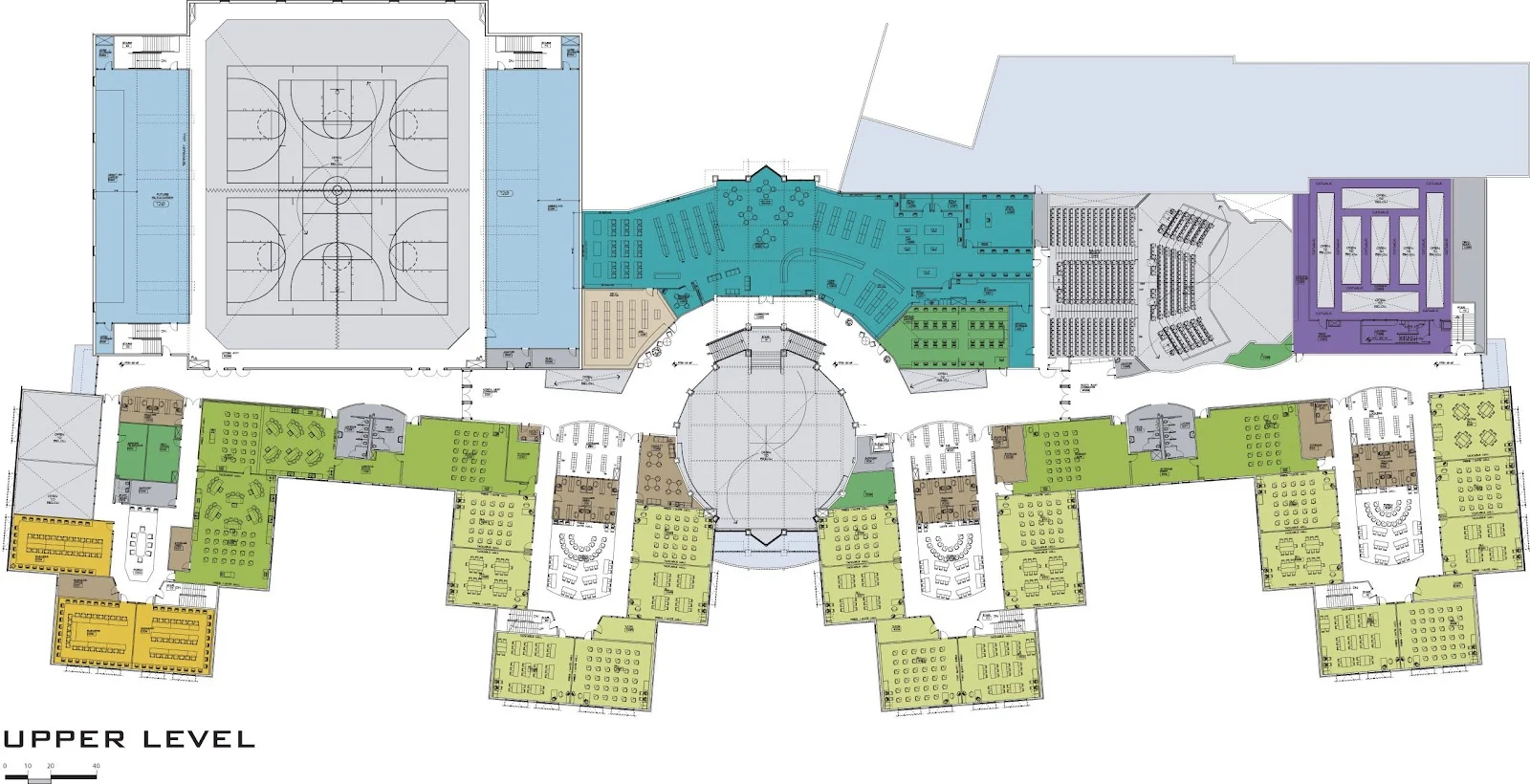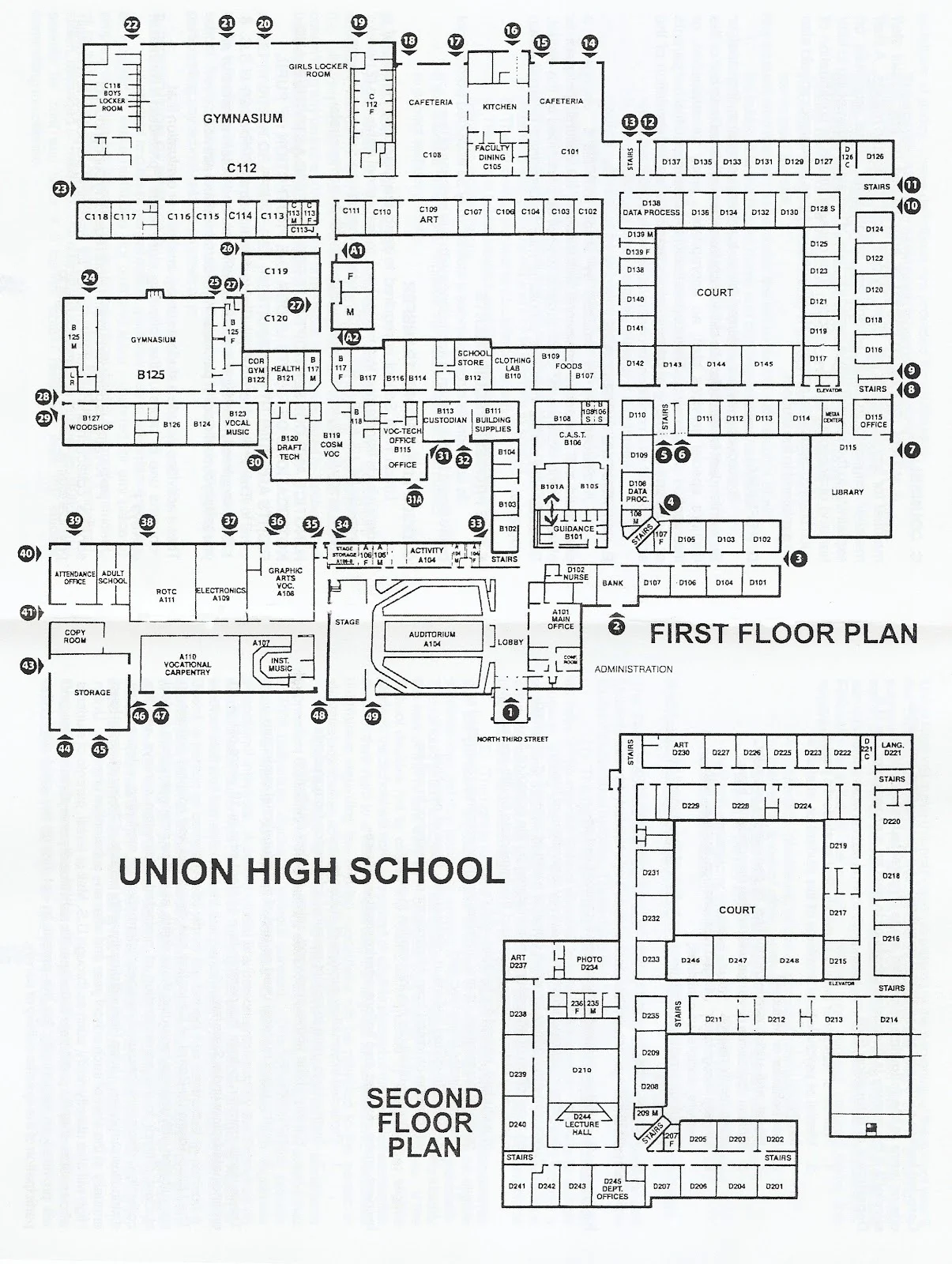High schools play a vital role in shaping young minds and preparing students for their future.
The design of high schools is a crucial aspect of the learning experience and can impact the health, safety, and overall success of students.
High school floor plans have a significant impact on the flow of traffic, the distribution of resources, and the overall organization of the learning environment.
In this article, we will explore seven key considerations for designing effective high school floor plans.
1. Safety
The safety of students is the top priority in any high school. Floor plans should be designed with safety in mind and should provide clear exit routes in case of emergency. The location of fire alarms, sprinklers, and exits should be easily accessible to students and staff.
2. Space Allocation
High school floor plans should allocate space efficiently to ensure that all learning resources are easily accessible to students. Classrooms, labs, libraries, offices, and common areas should be strategically placed to minimize the need for students to travel long distances between classes.
3. Flexibility
High school floor plans should allow for flexibility in the use of space. Classrooms should be designed with the ability to be converted into labs or vice versa as needed. This will help to maximize the use of available space and resources.
4. Collaboration
Collaborative learning is a crucial aspect of education, and high school floor plans should reflect this. Common areas, such as lounges and break rooms, should be placed in central locations to encourage interaction and collaboration among students.
5. Technology
Technology has become an integral part of education, and high school floor plans should reflect this by providing spaces for students to access technology resources. Computer labs and technology rooms should be easily accessible to students and staff.
6. Natural Light
Natural light has been shown to improve student learning and overall well-being. High school floor plans should maximize the use of natural light by incorporating large windows and skylights in classrooms and common areas.
7. Sustainability
Sustainability is becoming increasingly important in all aspects of life, including education. High school floor plans should incorporate eco-friendly design elements, such as energy-efficient lighting and HVAC systems, to minimize their impact on the environment.
8. Conclusion
In conclusion, high school floor plans play a critical role in shaping the learning environment for students. Effective floor plans should prioritize safety, space allocation, flexibility, collaboration, technology, natural light, and sustainability. By incorporating these seven key considerations, high schools can provide students with a safe, efficient, and dynamic learning environment that prepares them for their future.
High School Floor Plans Designed For Idea by Kevin Keller on Architectural Drawings School floor
Cass Technical High School : DesignShare Projects Pertaining To High School Floor Plans
Gallery of Akademeia High School in Warsaw / Medusagroup - 24 With Regard To High School Floor Plans
The high school archetype floor plan (excerpted from FEMA [26 Created For High School Floor Plans
Tentative Floor Plan of Updated Gering High School - Gering Public Intended For High School Floor Plans
Idea by Kevin Keller on Architectural Drawings School floor
High School of the Future : DesignShare Projects
Our School / Mitchell Floor Plan
High School Floor Plans Floor Plan School floor plan, School
Gallery of Binhai Xiaowai High School / HHD FUN - 26
File:Union high floor plan.jpg - Wikimedia Commons
High School Floor Plans u2013 Modern House
Cardozo SHS Floor Plan - Cardozo Senior High School
Example: Prince Andrew High School Floor Plan
Innisfail Middle School : DesignShare Projects














